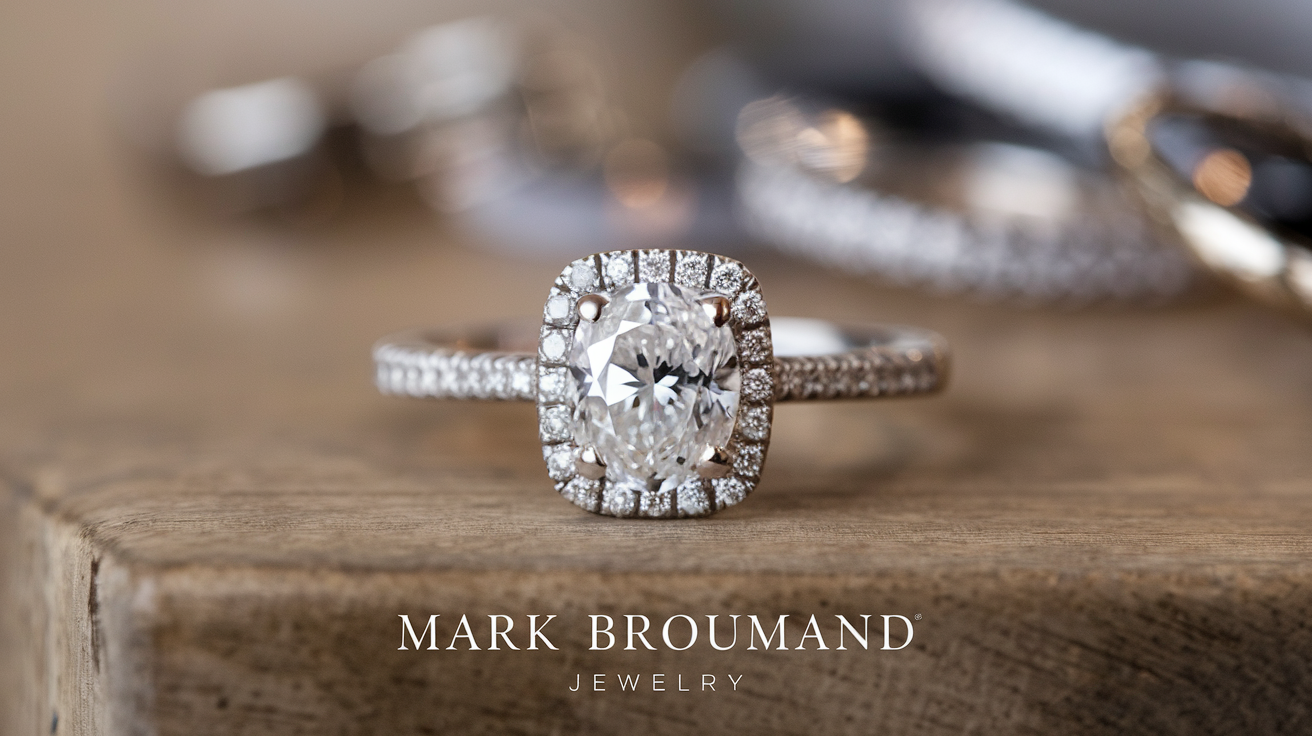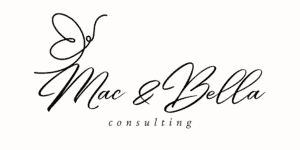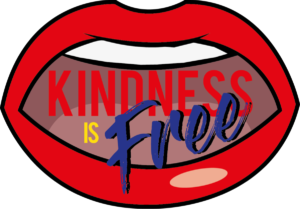
To select the ideal diamond shape for your engagement ring, consider your partner’s personal style, the ring’s setting and material from collections like Mark Broumand Jewelry, and the diamond’s characteristics, including cut, color, clarity, and carat weight.
You can choose from popular shapes like round brilliant, princess, oval, and cushion cuts, each with its unique features and advantages.
Think about the setting type, band style, and material, as these can complement or clash with the diamond shape.
By understanding the 4Cs and diamond proportions, you can make an informed decision that suits your partner’s taste and your budget.
Explore various diamond engagement rings to make a selection that gives you a truly special ring: Diamond Engagement Rings.
Highlights
- Consider your partner’s style and preferences, including classic or modern trends, wardrobe influence, and design preferences.
- Evaluate the 4Cs (cut, color, clarity, and carat weight) and diamond proportions to ensure a well-balanced stone.
- Think about the ring setting and material, including band style, setting types, accent details, and profile comfort.
- Assess the lifestyle compatibility and practicality of the diamond choice for daily wear.
- Weigh the importance of timelessness versus trends, and consider seeking professional advice from jewelers or gemologists.
Understanding Diamond Shape Options
When it comes to choosing a diamond shape, you’re not limited to the classic round brilliant cut. You’ve got a multitude of options, each with its unique diamond shape characteristics and historical significance. Consider the elegant oval, which has been a popular choice for centuries. Its elongated shape creates a larger appearance, making it a great option for those with smaller budgets. The marquise, with its pointed ends and curved sides, is another vintage choice that exudes sophistication.
You may also want to explore the square or rectangular emerald cut, known for its stepped faceting and large table. This shape showcases the diamond’s clarity rather than its brilliance, making it a great choice for those who value transparency. The Asscher cut, a square shape with a stepped faceting and a smaller table, is another option that exudes Art Deco charm. Each diamond shape has its unique characteristics, so it’s important to research and compare different options to find the one that suits your taste and budget. By understanding the distinct features of each shape, you’ll be able to make an informed decision and find the perfect diamond for your engagement ring.
Consider Your Partner’s Style
As you weigh your options for the perfect diamond shape, considering your partner’s style is essential in making a decision. You want the diamond to not only sparkle on their finger but also reflect their unique personality and aesthetic. If your partner has classic styles, they may prefer a traditional round or emerald-cut diamond. These timeless shapes exude elegance and sophistication, making them perfect for those who appreciate traditional beauty.
On the other hand, if your partner follows modern trends, they may be drawn to more contemporary shapes like a square or heart-shaped diamond. These bold shapes make a statement and showcase individuality. Consider their wardrobe, accessories, and overall style to gauge their taste in jewelry. Do they prefer clean lines, minimalist designs, or statement pieces? By understanding their style, you can narrow down your options and choose a diamond shape that complements their unique flair. This thoughtful consideration will show your love and attention to their personal taste.
Think About the Ring Setting
You’ll also want to reflect on the ring setting when choosing a diamond shape, as it can greatly impact the overall appearance of the stone. The band style, for instance, can either complement or clash with the diamond’s shape, so it’s important to take into account the two together. Additionally, the setting and prong style can affect how the diamond is secured and displayed, making it vital to evaluate these factors when making your decision.
Consider the Band Style
One key factor to ponder when selecting a diamond shape is the style of the band, as certain settings complement specific diamond shapes better than others. You’ll want to take into account the band materials and width to guarantee they don’t overpower the diamond. For instance, a thicker band may overwhelm a smaller diamond, while a delicate band may get lost with a larger diamond.
When reflecting on the band style, think about the following:
- Band width: A wider band can make a smaller diamond appear more substantial, while a narrower band can make a larger diamond appear more elegant.
- Band materials: A diamond set in a white gold or platinum band can create a sleek, modern look, while a yellow gold band can add a touch of warmth and tradition.
- Profile and comfort: A comfort-fit band with a rounded profile can be more comfortable to wear, while a standard band with a flat profile can provide a more streamlined look.
- Accent diamonds or details: Adding accent diamonds or intricate details to the band can enhance the overall appearance of the diamond and create a more elaborate look.
Setting Affects Diamond Appearance
Beyond the band style, the ring setting plays a significant role in showcasing the diamond’s beauty. When selecting a diamond setting, you’ll want to contemplate how it will enhance the appearance of your diamond. A well-chosen setting can make your diamond appear larger, more brilliant, and more fiery.
| Setting Type | Diamond Shape | Appearance Enhancement |
|---|---|---|
| Prong Setting | Round Brilliant | Maximizes brilliance and fire |
| Bezel Setting | Emerald Cut | Accentuates clarity and luster |
| Tension Setting | Pear Shape | Creates a sleek, modern look |
| Pave Setting | Cushion Cut | Adds a touch of vintage charm |
The right diamond setting can elevate the beauty of your diamond, making it a true showstopper. Contemplate the diamond shape and setting type that will work together to create a stunning appearance. By choosing a setting that complements your diamond, you’ll create a truly breathtaking engagement ring. Remember, the setting is more than just a way to hold the diamond in place – it’s a way to enhance its natural beauty and make it shine.
Prong Style Matters Too
While the setting type can greatly enhance your diamond’s appearance, the prong style also deserves careful consideration. You’ll want to choose a prong style that complements your diamond shape and setting type, while also guaranteeing the diamond is secure.
When selecting a prong style, consider the following factors:
- Prong types: Claw, bezel, channel, and tension prongs are popular options. Claw prongs are the most common, while bezel prongs provide a more modern look.
- Prong materials: Prongs can be made from the same metal as the setting or a different metal for contrast. Popular prong materials include gold, platinum, and palladium.
- Prong count: The number of prongs can vary, but four or six prongs are the most common. More prongs provide greater security, but may detract from the diamond’s appearance.
- Prong style: Prongs can be rounded, pointed, or flat. Rounded prongs are a popular choice for comfort and appearance.
Ultimately, your prong style choice will depend on your personal preference, diamond shape, and setting type. By considering these factors, you can choose a prong style that enhances your diamond’s beauty and guarantees its security.
Know the 4Cs of Diamonds
When shopping for a diamond engagement ring, understanding the 4Cs – cut, color, clarity, and carat – is essential in making an informed purchase. You want to choose a diamond that sparkles, shines, and reflects your love and commitment to your partner.
You will need to take into account diamond clarity, which refers to the presence or absence of inclusions and blemishes. Clarity is graded on a scale from Flawless (FL) to Included (I), with various grades in between. Then, take into account the diamond color, which is graded on a scale from D (colorless) to Z (light yellow or brown). The closer to colorless the diamond is, the rarer and more valuable it becomes.
In addition to clarity and color, you will need to take into account the diamond’s cut and carat weight. A well-cut diamond refracts light better, appearing more brilliant and fiery. Carat weight, on the other hand, is a measure of the diamond’s size. Balancing these four factors will help you choose a diamond that meets your budget and your partner’s style. By understanding the 4Cs, you can make a thoughtful and informed decision when selecting the perfect diamond for your engagement ring.
Popular Diamond Shapes Compared
Nine out of ten diamond engagement rings feature a round brilliant or princess cut diamond, but you have many other shapes to choose from. To find the perfect fit, contemplate comparing popular diamond shapes. When it comes to round vs princess, the former offers unparalleled brilliance, while the latter boasts a sleek, modern silhouette.
However, if you’re looking for something a bit more unique, you may want to explore other options. Oval and cushion cuts, for example, can add a touch of elegance to your engagement ring. Here are four key factors to contemplate when comparing diamond shapes:
- Appearance: Contemplate the style and aesthetic you envision for your engagement ring.
- Brilliance: Think about how much sparkle you want your diamond to have.
- Durability: Certain shapes are more prone to chipping or cracking than others.
- Budget: Some diamond shapes are more affordable than others due to factors like cutting complexity and waste reduction.
Evaluating Diamond Shape Proportions
As you evaluate diamond shape proportions, you’ll want to contemplate the table size, which affects the stone’s brilliance and fire. A well-proportioned table size can make a diamond appear larger and more radiant, while a poorly proportioned one can detract from its beauty. You’ll also need to assess the crown angle, which impacts the diamond’s overall appearance and ability to refract light.
Evaluating Diamond Table Size
Diamond table size is a crucial aspect of evaluating diamond shape proportions. When selecting a diamond, you want to make certain that the table size complements the stone’s overall shape and enhances its brilliance. A well-proportioned table size can also impact the diamond’s clarity, making inclusions less noticeable.
To evaluate diamond table size effectively, consider the following factors:
- Table proportion: The table should be in proportion to the diamond’s overall size. A general rule of thumb is that the table should be between 53% and 57% of the stone’s diameter.
- Diamond shape: Different shapes require different table sizes. For example, round brilliant diamonds typically have larger tables than emerald-cut diamonds.
- Crown angle: The crown angle can affect the table size. A steeper crown angle may require a smaller table to maintain ideal brilliance.
- Personal preference: Ultimately, the table size you choose depends on your personal style and preferences.
Assessing Crown Angle Impact
When you’ve found a diamond with a well-proportioned table size, it’s time to contemplate another key factor in evaluating its shape: the crown angle. The crown angle affects the diamond’s light performance, so it is crucial to understand its impact. A well-proportioned crown angle allows light to enter and exit the diamond, maximizing its brilliance.
| Crown Angle | Light Performance | Brilliance |
|---|---|---|
| Shallow (less than 30°) | Poor | Low |
| Ideal (30-35°) | Excellent | High |
| Steep (more than 35°) | Fair | Medium |
As you assess the crown angle, consider its impact on the diamond’s overall appearance. A shallow crown angle can make the diamond appear dull, while a steep angle can create a “bow-tie” effect. An ideal crown angle, between 30-35°, balances light performance and brilliance, creating a stunning diamond. By understanding the crown angle’s impact, you can make an informed decision when selecting the perfect diamond for your engagement ring. Consider the diamond’s proportions and how they will affect its overall appearance, ensuring you choose a diamond that shines brightly for years to come.
Assessing Diamond Sparkle and Fire
Most people regard sparkle and fire to be the most enchanting aspects of a diamond. As you assess diamond sparkle and fire, you’ll want to take into account how these characteristics will impact the overall appearance of your engagement ring.
When making a sparkle comparison, take into account the following factors:
- Cut quality: A well-cut diamond will refract light better, resulting in more sparkle.
- Proportions: A diamond with ideal proportions will allow for maximum sparkle.
- Polish: A diamond with a high polish will refract light more efficiently, increasing sparkle.
- Symmetry: A symmetrical diamond will refract light more evenly, creating a more dazzling effect.
In addition to sparkle, you’ll also want to evaluate a diamond’s fire characteristics. Fire refers to the way a diamond disperses light into a range of colors. A diamond with high fire will appear more vibrant and radiant. By taking into account both sparkle and fire, you’ll be able to choose a diamond that truly shines. Remember, the goal is to find a diamond that will sparkle and shine on your partner’s finger for years to come.
Making Your Final Decision
Now that you’ve evaluated a diamond’s sparkle and fire, it’s time to weigh all the factors and make a decision. Consider your personal preferences, lifestyle, and the style of your partner. Think about the setting, metal type, and overall aesthetic you envision for the engagement ring.
As you weigh your options, keep in mind that there’s no one-size-fits-all solution. Your final decision should be based on a combination of factors, including the diamond’s characteristics, your budget, and your partner’s tastes. Don’t hesitate to seek advice from a professional jeweler or gemologist if needed.
In your final thoughts, consider the long-term implications of your decision. Will the diamond shape you choose remain timeless and elegant, or will it fade with fleeting trends? Prioritize your needs, and don’t be afraid to compromise if necessary. Ultimately, the ideal diamond shape is one that balances your needs, preferences, and budget while symbolizing your love and commitment to your partner. By carefully weighing your options, you’ll find the perfect diamond shape for your engagement ring.
Conclusion
You’ve considered your partner’s style, the ring setting, and the 4Cs of diamonds. Now, weigh the pros and cons of each diamond shape, and assess the proportions, sparkle, and fire of your top choices. Trust your instincts and prioritize your needs. With careful evaluation, you’ll find the ideal diamond shape for your engagement ring. Make an informed decision, and you’ll be confident in your choice, ready to propose with the perfect ring.












































